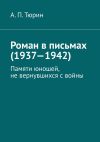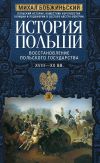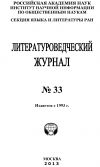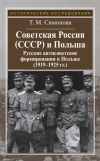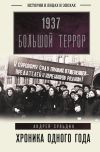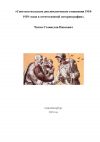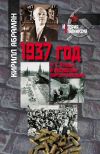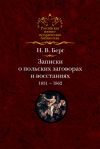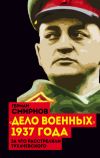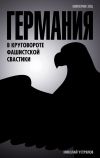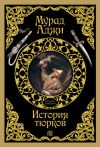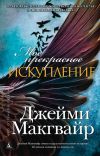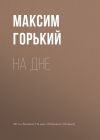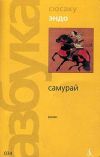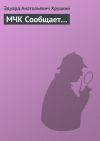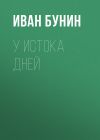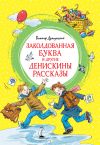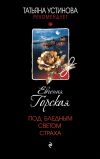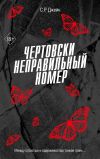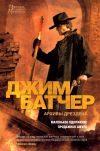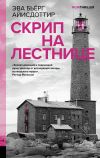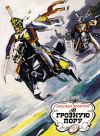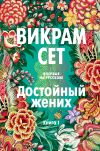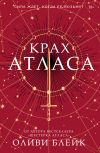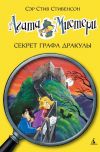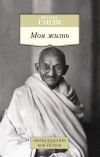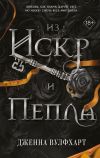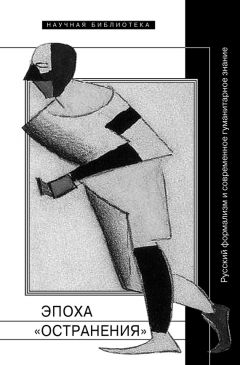
Автор книги: Коллектив авторов
Жанр: История, Наука и Образование
Возрастные ограничения: +18
сообщить о неприемлемом содержимом
Текущая страница: 13 (всего у книги 50 страниц) [доступный отрывок для чтения: 14 страниц]
Ingarden R. [Rev. of Kridl 1936(a)] // R. Ingarden. Studia z estetyki. Warszawa, 1970. T. 3. S. 405–412.
Jakobson R., Siedlecki F. List badacza polskiego [1941] // Literatura, komparatystyka, folklor. Księga poświęcona Julianowi Krzyżanowskiemu. Warszawa, 1968. S. 664–674.
Kapust A. Phänomenologische Bildpositionen // Bildtheorien: Anthropologische und kulturelle Grundlagen des Visualistic Turn. Frankfurt am Main, 2009. S. 255–283.
Karcz A. Manfred Kridl: The Struggle for the Reform of Polish Literary Scholarship // The Polish Review. 2000. Vol. 45. № 2. P. 171–182.
Kridl M. Przełom w metodyce badań literackich // Przegląd Współczesny. 1933. Rocz. 12. T. 44. № 130. S. 145–162.
Kridl M. Wstęp do badań nad dziełem literackim. Wilno, 1936(a).
Kridl M. Podstawy nauki o literaturze // Pamiętnik Literacki. 1936(b). Rocz. 33. S. 291–298.
Markiewicz H. Recepcja formalizmu rosyjskiego w Polsce // Problemy wiedzy o kulturze: Prace ofiarowane Stefanowi Żółkiewskiemu. Wrocław, 1986. S. 491–508.
Markiewicz H. Manfreda Kridla boje o nową naukę o literaturze // Markiewicz H. Od Tarnowskiego do Kotta. Kraków, 2010.
Mayenowa M. R. Rosyjskie propozycje teoretyczne w zakresie form poetyckich (1916–1930) // Rosyjska szkoła stylistyki. Warszawa, 1970. S. 14–54.
Meyerson E. De l’explication dans les sciences. Paris, 1921.
Prace ofiarowane Kazimierzowi Wóycickiemu. Wilno, 1937.
Siedlecki F. Roman Jakobson i nowa lingwistyka // Wiadomości Literackie. 1934. № 43 (570). S. 4.
Siedlecki F. O rytmie i metrze // Skamander. 1935. Rocz. 9. Zesz. 59. S. 164–177.
Sériot P. The impact of Czech and Russian biology on the linguistic thought of the Prague Linguistic Circle // Prague Linguistic Circle Papers = Travaux du Cercle linguistique de Prague. N. S. 1999. Vol. 3. P. 15–24.
Simmel G. Rembrant: Ein Kunsthistorischer Versuch. Leipzig, 1916.
Thiel D. Husserls Phänomenographie // Recherches Husserliennes. 2003. № 19. P. 67–108.
Tuwim J. Atuli mirohłady // Wiadomości Literackie. 1934. № 31 (558). S. 3.
Twardowski K. Zur Lehre vom Inhalt und Gegenstand der Vorstellungen: Eine psychologische Untersuchung. Wien, 1894.
Ulicka D., Adamiak M. (red.). Tradycje polskiej nauki o literaturze: Warszawskie Koło Polonistów po 70 latach. Warszawa, 2008.
Wellek R. Concepts of Criticism. New Haven, CT, 1963.
Wóycicki K. Jedność stylowa utworu poetyckiego. Warszawa, 1914.
Žirmunskij V. Formprobleme in der russischen Literaturwissenschaft // Zeitschrift für Slavische Philologie. 1925. Bd. 1. H. 1. S. 117–152.
Żółkiewski S. Charakter orzeczeń metodologicznych w naukach humanistycznych // Prace ofiarowane Kazimierzowi Wóycickiemu. Wilno, 1937. S. 33–56.
Żółkiewski S. Powrót do Itaki // Życie Literackie. 1938. Rocz. 2. Zesz. 5. S. 192–195.
Żółkiewski S. O Franciszku Siedleckim // Siedlecki F. Pisma. Warszawa, 1989. S. 5–44.
Богданов A. A. Эмпириомонизм: Статьи по философии. М., 1904–1906. Кн. 1–3.
Богданов A. A. Искусство и рабочий класс. М., 1918.
Виноградов В. В. Из истории изучения поэтики (20-е годы) // Известия АН СССР. Серия литературы и языка. 1975. Т. 34. № 3. С. 259–272.
Выготский Л. С. Психология искусства. М., 1986.
Жирмунский В. М. К вопросу о формальном методе // Вальцель О. Проблема формы в поэзии. Пг., 1923. С. 5–23.
Ильин В. [Ульянов (Ленин) В. И.] Материализм и эмпириокритицизм: Критические заметки об одной реакционной философии. М., 1909.
From isolation to concentration:
The Archeology of the Relationship between Russian Formalism and Czech Structuralism in Polemics and Discussions
Michal Kříž
Scientific work is to search, describe and classify the material that is given to the science; the most abstract goal of the scientific research includes general laws that govern all events in the study area.
[Mukařovský, 1948: 13]
The history of Czech Structuralism is full of various polemics that were often significantly contributed to the development of structural thinking. It is not just about mutual polemical clashes, but about the way in which the various debates were held, or about a particular strategy which can often be reconstructed based on different types of texts. What can we meaningfully imagine when the concept of the strategy of thinking is used? In other words, is it possible to detect and analyze, referring to the quoted Mukařovský’s passage, some general patterns, which govern the area of scientific inquiry? If we ask such questions, we can add one more: it is possible to construct a historical analysis of scientific opinion or a current theoretical research rather than as (i) the development of ideas and knowledge related to the specific areas of human activity or (ii) the historical stage in the development of a certain type of Sciences (humanities, literary), but as the description and analysis of a historical space, within which the ideas, knowledge are still in the making? In this sense, it is not a description of the findings in terms of their development to the objectivity, but the history of the terms of their ability to appear and operate within a particular field of thought. It is clear that the results of such historical analysis, defined as archeology, cannot be integrated into a complex interpretation of Czech Literary Structuralism and its development. Taking into account the issue of the relationship between Russian Formalism and Czech Structuralism, that is the way the relationship was interpreted, understood and theoretically grounded in approaches to the tradition of Czech Structuralism, the analysis of archeology may be the appropriate tool to better understand the historical period.
1. How to understand the concept of Archeology?
Foucault’s project of the Archeology focused on the description of discursive formations – in conjunction with a partial opposition to the Genealogy of Power – is widely known. There is also a large amount of various discussions[84]84
For instance, two famous polemics should be mentioned: Jean Baudrillard’s [Baudrillard, 1977: 12–13] and Jacques Derrida’s [Derrida, 2002] critiques of Foucault’s Archeology.
[Закрыть] and comments related to it. In what may lie practical usefulness of the project in the sense of analyzing something what was part of the discussions in the first place of the origin of Czech Structuralism as well as the originality of its approach to the basic questions of language and art. As a central strategy of the whole project can be seen Foucault’s effort to describe the phenomena as they really are; It sounds rather trivial, but the foundation of this effort includes, we believe, the main attraction that still brings back many researchers to this project. It is because of a specific method, which gives up the idea of “assuming anything else” [Veyne, 2010: 401]. These assumptions can include diverse material causes, objectives, functions or objects that often appear in the context of such considerations. According to Foucault, there is just a practice and its objectification, any effort to explain things as the functions of a purpose is a myth of the traditional history.[85]85
“Tâche qui consiste à ne pas – à ne plus – traiter les discours comme des ensembles de signes (d’éléments signifiants renvoyant à des contenus ou à des représentations) mais comme des pratiques qui forment systématiquement les objects dont ils parlent” [Foucault, 1969: 66–67].
[Закрыть] It is no coincidence that some parallels to such consideration can also be found in the context of Jan Mukařovský’s thinking, especially in relation to his reflections on the poetical, later even anthropologically based, rhythm. Initially, the rhythm was a basic form [Mukařovský, 1986: 118–120], that is the organizing principle of the individual components of a work of art (along with composition), later – under the influence of Phenomenology – one of the fundamental relationships of the human body to the world. The matter, originally given (as the principle revealed in a work of art), thus became a founding relationship, that is something – expressed in Husserl’s style – what is not fully out of the consciousness, but is also not purely psychological content of the consciousness. “Things” (phenomena) exist only in the relation to something that is just as related to a specific historical context[86]86
It is necessary to: “définir ces objects sans référence au fond des choses, mais en les rapportant à l’ensemble des règnes qui permettent de les former comme objects d’un discours et constituent ainsi leurs conditions d’apparation historique” [Foucault, 1969: 65].
[Закрыть]. The Archeology, as a specific method of analysis, which aims to uncover and identify primarily a set of conditions under which it is possible to determine certain mental concepts of development of theoretical thought, is not a substitute for the history of selected schools of thought or a theory. The Archeology is not a causal description of the development and its historical context, but it is primarily focused on the levels that can be meaningfully analyze, therefore demonstrate the dependence of specific conceptions to a set of certain assumptions, which have their own characteristic and logical structure. In its basic form it contains two complementary requirements: (i) If an object of the Archeologic description is a system of rules that allows the creation of objects in the space-time frame, then the object is associated with the central question of the legitimacy of rules governing the form of individual objectification in the process of their sharing/non-sharing, therefore the possibility of their existence/non-existence;[87]87
What is not shared within the rules, therefore excluded, it seems impossible in the context of the practice (literally not shown), and therefore it is – as a result – non-existent [Foucault, 1994; Borecký et al., 2011: 24].
[Закрыть] (ii) The system of sharing is essentially a system of norms operating in the context of specific social groups. The Archeology itself then becomes a historical-comparative method in which the priority is given to descriptions of the individual objectifications. It is not primarily the work of interpretation, which is though hidden in the base of each realized description. The task of the Archeology is to analyze selected structures of thinking and determine their rules.
On the basis of what has been said so far, we can determine three basic meanings of the Archeology as the method: (1) The Archeology is a description and analysis of a historical area within which ideas or knowledge are generated. (2) The Archeology is a method of analysis, which favors the description before the causality on the level of events or knowledge and uncovers the historical preconditions for certain configurations of knowledge than the knowledge itself. (3) The Archeology is specific method of analysis, which aims to uncover and identify a set of conditions under which it is possible to determine certain mental concepts of development of theoretical thinking, thus it is not a substitute for the history of a selected tradition of thoughts or a theory.
2. Basic Typology of Polemics in the Thirties
A discussion about the relationship between Czech Structuralism and the Russian School of Formalism is impossible to separate from the broader context of other controversies and polemics that took place, often simultaneously, in the thirties not only within the Prague Linguistic Circle, but also between representatives of the Czech Structuralism and their opponents. Some of the topics discussed in the context of polemics about the relationship between Czech Structuralism and Russian Formalism also appear in other contexts of different disputes. Each set of different discussions can be characterized by the relationship between a basic category, which is at the base of the whole set of various polemics, and the form that determines its realization. The summarization simplifies, of course, but each designation of the topic of various polemics, functioning as a kind of label, represents the central question that underlies all debates [Kříž, 2014].
A. A nature of Poetic Language (the category of “dominating factor”/Form: “deformation”);[88]88
There is primarily a discussion relating to the first Prague Linguistic Circle’s collective monograph Czech Literary Language and Culture published in 1932. It was the extensive discussion, which was conducted primarily as a dispute between Czech Structuralists and Jiří Haller, the chief editor of the linguistic journal Naše řeč [Havránek, Weingart, 1932; Haller, 1933].
[Закрыть]B. A relation of work of art to subject of “the author” in the process of literary communication (the category of “experience”/Form: “enjoyment”)[89]89
Basically, there is a debate between Jan Mukařovský and Jan Vojtěch Sedlák who was primarily interested in the field of versology and aesthetics. The core of the dispute was the tradition of philosophical idealism, on the one hand, and the philosophical intuitionism, on the other hand, in the context of literary criticism, the tradition against which the Czech Structuralism clearly defined critical. Later, the controversy also involved Bohuslav Havránek, Roman Jakobson, and René Wellek [Mukařovský, 1931: 253–263; Havránek, 1930: 1–11, 93–100; Sedlák, 1935].
[Закрыть];C. Basic concepts of Czech Structuralism (function, structure, intention)[90]90
It is clear that the basic concepts of structural thinking has been the subject of many considerations; in the 1970s there was an exclusive project of The Institute of Czech Language of the Academy of Sciences Development of the basic concepts of the Prague School dedicated to the topic. Several studies were published taking into consideration the fact how the basic structural concepts were used by the representatives of the Czech Structuralism, on one hand, and how the same concepts were understood by their opponents, on the other hand [Jirsová, 1988: 155–164; Svozilová, 1988: 64–71; Kořenský, 2008: 44–48].
[Закрыть]D. Structural model of literary development (the category of “Selbstbewegung”/Form: “dual motivation”)[91]91
The structural model of development applied to the system of literature was first briefly introduced in Jan Mukařovský’s study Polak’s Sublime of Nature published in 1934. The discussion also involved several representatives of the Czech Marxism (for instance, Záviš Kalanda, Kurt Konrád or Bedřich Václavek). There were also critical voices within the Prague Linguistic Circle, especially the criticism of Mukařovský model of development by René Wellek and Alfréd Bém [Mukařovský, 1948: 91–176; Bém, 1935: 330–334; Wellek, 1934: 437–445].
[Закрыть].
The first set (A) of discussions is associated with the context of various considerations of the written/standard language; the set of polemics represents probably the most extensive context of various disputes in the thirties, in which not only theorist in the field of Linguistics and Literary Criticism (Aesthetics) have been involved, but also journalists, writers and wider public as well. The category of dominant occupies the central location within the set of polemics; the category that was systematically analyzed by Jan Mukařovský was applied to the discussed relationship between the poetic language and the standard/written language. The category of dominant together with the process of deformation, considered as a function of the category, represent the basic structure, which became a central perspective for described set of polemics that also appeared later in different kind of variations. The second set (B) of polemics was conducted mainly in the field of Literary Theory (Aesthetics) and its content gradually built up the structuralist concept of art (literature) as a specific type of communication, which is governed by autonomous rules. Even in that context of polemics we find topics resonated further in the development of Czech Structuralism (for instance the issue of the intentionality of an author). While the third set (C) of controversies is linked to the debate on basic principles and concepts of the Structuralism as the whole, the fourth set (D) of controversies, together with the first one, form most extensive “field of discussions” in the thirties. The structural model of the development originally proposed by Jan Mukařovský and primarily applied to the system of literature provoked a wide discussion on diachrony in the Humanities.
3. Two Levels of the Analysis
Variability in discussions about the relationship between Czech Structuralism and Russian Formalism is well detectable in the perspective of the two models, each of which describes a set of discussions and its relations to other sets of controversies. As indicated in connection with the characterization of the analysis as Archeology, individual arguments contained in various controversies enter into different relationships that can meaningfully be described as a structure of rules that are implemented in different variations. Both models have themselves been the subject of various discussions, but by its form they allow to analyze various conflicts not only on the basis of chronological order of their succession.
3.1 Isolation/Concentration Analysis
Individual views on the relationship (or on the category of continuity) between Russian Formalism and Czech Structuralism might be perceived as a certain figure of the double movement realized in the process of human reception. Individual interpretations intersect, as already indicated, other important debates such as discussions about (1) poetic language and the culture of language, (2) poetry or the art of literature respectively and the way how we can study both, and finally about (3) the form and character of literary history. The source of inspiration here was probably the Gestalt psychology, on the one hand, and traditional aesthetics of perception, on the other, which both coincidentally became a source for the concept, proposed by Jan Mukařovský, of mental processes of a perceiving subject in the context of the unifying principle of artistic creation [Schmid, 2011: 23–47]. The relationship of Russian Formalism and Czech Structuralism, previously suggested, becomes a secondary synecdoche of the larger controversy between representatives of structural thinking and their – speaking awkwardly – ideological opponents. The double movement lies in the application of the two-phase model to the empirical process of human perception, in which the base is the assumption that human consciousness accesses to external stimuli actively, which are the objects of perception; that means individual perceptions are actively reflected by the human consciousness. Leaving aside the historical and theoretical context of that account, the first phase is described as a particular isolation of the shaped outline in the context of other objects. The second concentration phase is focused on the already isolated scheme of shapes that is progressively re-instigated in different material variations by the consciousness, or is eventually corrected if any defect types are detected within the isolated scheme. The model of reception of the human consciousness is likely to become a model not only for Mukařovský in his consideration of rhythmic structuring of a work of art in the process of its perception but also for adjudicators in terms of the relationship between Russian Formalism and Czech Structuralism.
The unified principle plays here a triple role: I. as the methodological approach to the perception of a work of art (represented by Jan Mukařovský [1948 (1928), 1982 (1929)]); II. as the method of interpretation and explication of (a) the historical relationship of Russian Formalism and Czech Structuralism,[92]92
Corpus of texts [Svoboda, 1931: 17–20; 1934: 37–45; 1935: 1–8; 1937: 203–212; Pospíšilová, 1933: 407–412; Jakobson, 1934: 6–9; Mukařovský, 1935a: 29–39].
[Закрыть] and of (b) basic intellectual concepts of Czech Structuralism that are related to basic questions i. on poetic as well as ii. standard/written language, and finally iii. on the basic concepts of the whole intellectual formation (terms such as function, structure, purpose); last but not least, III. as the model for the interpretation of the historical development of Czech Structuralism which obtained appearance of the two-phase model [Schmid, 2011: 23]. In the base of such two-phase model there is an idea as follows: during the first phase the Czech Structuralism tried to isolate (1) its own relationship to the tradition of Czech Aesthetics that contains various elements (an example might be René Wellek’s different opinion on the role of Russian Formalism in the context of the development of the Czech Structuralism), as well as (2) the basic concepts of its approach to various questions about language, art, and literature respectively. By the process of isolation a certain space of the structuralist formation was allocated and then it was often modulated (concentrated) in a dialogue about basic procedures and concepts that were isolated and described during the first phase.
3.2 Form/Content Analysis
Certainly, we can agree with Zdeněk Mathauser [Mathauser, 2006: 75–77] that the basic model of the relationship of two concepts (form/content) that is central to the initial polemics, is retained well in their extreme positions: on the one hand, it appears a form [A] of the relationship containing a pair of relations: the active form (essentially Aristotelian form[93]93
See [Mathauser, 2006: 76; Schmid, 2011: 26].
[Закрыть]) and the passive content (waiting to be filled), on the other hand, we find a form [B] of the relationship as a pair of the active content (imbued with the idea of aesthetics) and the passive form, whose main function is to promote the richness of the content. This model in its various embodiments includes the criterion of ‘permeability’, that means to what extent both mutual poles are/are not complementary to each other. Finally, in different historical realizations each pole is attributed to a certain norm bearing in itself a criterion of evaluation. The axiological structure of art is so firmly rooted in the ‘form/content’ relationship, therefore it cannot be substantially affected by the process of reception. The model can then be as follows:

The model represents, of course, extreme poles of the Form and Content relationship, for which we would find their historical realizations, but the essential feature of this model should be more in the nature of the relationship that would possibly have different variants.
4. The Relationship between Russian Formalism and Czech Structuralism
The relationship between Czech Structuralism and the tradition of Russian Formal School became the subject of a greater number of various polemics during the thirties in Czechoslovakia; by its importance the relationship was systematically drawn into the wider context of discussions of the fundamental theses and approaches of the structural thinking. The relationship of both traditions in relation to the general picture of Formalism seems to be a central theme of all debates. The relationship is well understood and it was discussed many times, but the very fact of continuity or inspiration of ideas is not just some common factor of interpretations of the development of Czech Structuralism, but also the basis, often unexpressed explicitly, of all contemporary interpretations and polemics. The category of continuity[94]94
The concept of acceptance, proposed by Oleg Sus, was unveiled in Karel Svoboda’s approach to the question of the relationship between Russian Formal School and Czech Structuralism. Svoboda’s approach had a form of certain description how the genetic relationship between Russian formalism and Czech structuralism was described and understood [Sus, 1968: 22].
[Закрыть] was often viewed dynamically (Russian formal method versus Czech aesthetic tradition) and was always relational in the sense of a fulfillment/non-fulfillment[95]95
Zděnek Mathauser writes about the category of completion/non-completion which is at the base of various controversies between formalistic and structuralist oriented approaches, on one side, and a set of realistic and naively idealistic or speculative ideas, on the other. In this sketch, one cannot ignore the concept (discussed many times) of the relationship between content and form [Mathauser, 2006: 75–85].
[Закрыть]. The category of continuity in the form of variables allowed individual users to develop their own interpretations of the relations between Russian Formal School and Czech Structuralism generally in two ways: (1) as a common response to the previous tradition of Aesthetics and art theory or (2) as the complex relationship of two important directions in thinking about literature and art in general. Both methods contain in themselves certain classification that is either considered as the status of historical analysis (in the sense of Sus’s concept of acceptance), or as theoretical considerations of the common base fulfilling various forms: most frequently of ideas or consciousness [Pospíšilová, 1933: 410]. The sketched scheme of various debates were not realized as a standard polemic, but rather as a diversity of opinions on the tradition of Russian Formal School and its impact on the Czech Structuralism. Yet we can talk about the set of polemics, often hidden or masked by the specific interest for a deeper analysis of historical influences.
In the context of various polemics or of implicit cues about the origin of the Czech Literary Structuralism, it depends on what context of the Form and Content relationship was selected by participants of those discussions. The polemic between Jan Mukařovský and Karel Svoboda is considered as the most comprehensive discussion about the topic in the retrospect view. Certainly, we should also take into consideration the fact that the mentioned discussion is topically related to more fundamental and still even more famous (also frequently mentioned) controversies during the thirties, especially to the debate about the origin of literary history; that is the debate related to Mukařovský’s attempt to analyze the development of a poetic structure of Milota Zdirad Polák’s poem Sublime of Nature. Svoboda published his texts related to the topic in the magazine of Naše věda; schematically speaking, he oscillated between a positive evaluation of the Formalism as a method, in particular he referred to Mukařovský’s extensive study Máchův Máj (1928) [Svoboda, 1931], and a criticism or negative evaluation of the Formalism as a complex attitude to questions of art. In Svoboda’s extensive overview of the Formal method (On so-called Formal Method in Literary Theory [Svoboda, 1934]), he does not only refer to other, similarly conceived text Russian Formalism published by Anna Pospíšilová in Listy pro umění a kritiku [Pospíšilová, 1933], but he also uses a similar model to describe the Russian Formalism and its intellectual influence on the Czech Structuralism. A schematic structure of discussions between Karel Svoboda and Jan Mukařovský (with a broader context of various reactions) could be as follows:

Svoboda’s studies (I–IV) were written in the period from 1931 to 1937, each of these analyses accented different elements from a complex set of concepts and practices of the Russian Formal School as well as an ideological concept of Czech Structuralism on the implicit level. The originality of Russian Formalism method and its legitimacy in relation to the tradition of Czech Structuralism are interpreted as a certain historical response (with the absence of a sufficient activity) to the absence of the influence of Renaissance humanism on Russian culture. Svoboda implicitly establishes two complaints about the Formal method: on the one hand, he accuses the formal method of an absence of totality, the complexity of view (the form A of Form – Content relationship); therefore the method is considered as a certain accentuation of the naturalistic value in the process of development of the method while on the axiological level the method is considered as an absence of the typicalness; on the other hand, he accuses the formal method of opting artwork from the social context. It is no coincidence that both complaints in general are transformed into the different controversy between the Czech Structuralism and Marxism. The basic parameter of Svoboda’s accounts represents a certain form of absence, which is within the isolation/concentration model assigned to the isolation phase, that is the moment when the Russian Formalism tries to define its relation to the contemporary tradition of thinking about literature, on the one hand, and when the Czech Structuralism tries to create a meaningful description of its relationship to the Russian Formal School, on the other. If the isolation phase consists of a certain form of the absence, therefore an incompleteness of a form, the concentration phase is necessarily tainted as well, that means a certain form of reduction is presented. It is the form of reductionism that will play an essential role in the argument against Mukařovský’s proposal of the model of structural literary history in the context of discussions between Czech Structuralism and Marxism.

Jan Mukařovský responded to Svoboda’s accounts in two different ways: on the one hand, he criticized Svoboda’s concept, within the concentration phase according to the model, of ‘acceptance’ described as the relationship between Russian Formalism and Czech Structuralism without mentioning his name [Mukařovský, 1948 (1935b): 4]; on the other hand, later he put his criticism of Svoboda’s claim of lack of social context in the concept of Structuralism only in the footnote that was not included in a later edition of the study [Mukařovský, 1935a: 29]. After 1935, it seemed that the polemic had been exhausted, yet Karel Svoboda in his study [1937], devoted to Durdík’s aesthetics that was written on the occasion of the centenary of Durdík’s birth, did not forgive an ironic comment addressed essentially to the entire school of the Czech Structuralism, and to Jan Mukařovský especially. Basically, he negated the entire tradition of Czech Structuralism by his stylized declaration of the lack of any Czech aesthetic contemporary movement, which would protect (1) the autonomy of art, (2) the critical importance of an artistic form, as well as (3) the need for artistic stylization or (4) the aesthetic value of the speech. In the view of many studies or considerations published by the Prague Linguistic Circle, Svoboda’s comment might only be seen as an ironic mockery.
References
Baudrillard J. Oublier Foucault. Paris, 1977.
Bém A. L. Methodologické poznámky ke studii Jana Mukařovského “Polákova Vznešenost přírody” // Časopis pro moderní filologii. 1935. Roč. 21. № 3/4. S. 330–334.
Borecký F., Fišerová M., Švantner M., Váša O. Rozum, nerozum a přesvědčivost obrazů. Praha, 2011.
Derrida J. Násilí a metafyzika. Praha, 2002.
Foucault M. L’Archéologie du Savoir. Paris, 1969.
Foucault M. Dějiny šílenství: Hledání historických kořenů pojmu duševní choroby. Praha, 1994.
Haller J. Spisovná čeština a jazyková kultura I // Naše řeč. 1933. Roč. 17. № 1. S. 11–19.
Havránek B. K nové české práci o otázkách básnického jazyka // Naše řeč. 1930. Roč. 14. № 1. S. 1–11; № 5. S. 93–100.
Havránek B., Weingart M. (edd.). Spisovná čeština a jazyková kultura. Praha, 1932.
Jakobson R. O předpokladech pražské lingvistické školy // Index. 1934. Roč. 6. № 1. S. 6–9.
Jirsová A. K vývoji pojetí některých základních lingvistických pojmů: K pojetí systému a struktury v klasickém období české lingvistik // Slovo a slovesnost. 1988. Roč. 49. № 2. S. 155–164.
Kořenský J. Teleologie jako jeden ze základních pojmů Pražského lingvistického kroužku? // Slovo a slovesnost. 2008. Roč. 69. № 1. S. 44–48.
Kříž M. Boj o strukturalismus: Archeologie českého literárněvědného strukturalismu. Olomouc, 2014.
Mathauser Z. Básnivé nápovědi Husserlovy fenomenologie. Praha, 2006.
Mukařovský J. Máchův Máj [1928] // Mukařovský J. Kapitoly z české poetiky 3. Praha, 1948. S. 9–202.
Mukařovský J. O současné poetice [1929] // Mukařovský J. Studie z poetiky. Praha, 1982. S. 22–33.
Mukařovský J. Umělcova osobnost v zrcadle díla: Několik kritických poznámek k uměnovědné teorii i praxi // Akord 1931. IV. S. 253–263.
Mukařovský J. Poznámky k sociologii básnického jazyka // Slovo a slovesnost. 1935(a). Roč. 1. № 1. S. 29–39.
Mukařovský J. Dialektické rozpory v moderním umění [1935(b)] // Mukařovský J. Kapitoly z české poetiky 2. Praha, 1948. S. 290–307.
Mukařovský J. Kapitoly z české poetiky 1: Obecné věci básnictví. Praha, 1948.
Mukařovský J. Úvod do estetiky [1931–32] // Estetika. 1986. Roč. 23. № 5. S. 25–45.
Pospíšilová A. Ruský formalism // Listy pro umění a kritiku. 1933. Roč. 1. S. 407–412.
Sedlák J. V. O díle básnickém. Jeho podstata a výklad. Praha, 1935.
Schmid H. Struktury a funkce: Výbor ze studií 1989–2009. Praha, 2011.
Sus O. Český formalismus a český prestrukturalismus // Orientace. 1968. Roč. 3. № 5. S. 21–27.
Svoboda K. Jan Mukařovský: Máchův Máj // Naše věda. 1931. Roč. 12. S. 17–20.
Svoboda K. O tak zvané formální metodě v literární vědě // Naše věda. 1934. Roč. 15. № 2. S. 37–45.
Svoboda K. Česká estetika po Hostinském // Naše věda. 1935. Roč. 16. № 1. S. 1–8.
Svoboda K. Durdíkova estetika // Naše věda. 1937. Roč. 18. S. 203–212.
Svozilová N. K vývoji pojetí některých základních lingvistických pojmů a termínů. K vývoji pojetí funkce // Slovo a slovesnost. 1988. Roč. 49. № 1. S. 64–71.
Veyne P. Jak se píšou dějiny. Červený Kostelec, 2010.
Wellek R. Dějiny českého verše a metody literární historie // Listy pro umění a kritiku. 1934. Roč. 2. S. 437–445.
Правообладателям!
Данное произведение размещено по согласованию с ООО "ЛитРес" (20% исходного текста). Если размещение книги нарушает чьи-либо права, то сообщите об этом.Читателям!
Оплатили, но не знаете что делать дальше?